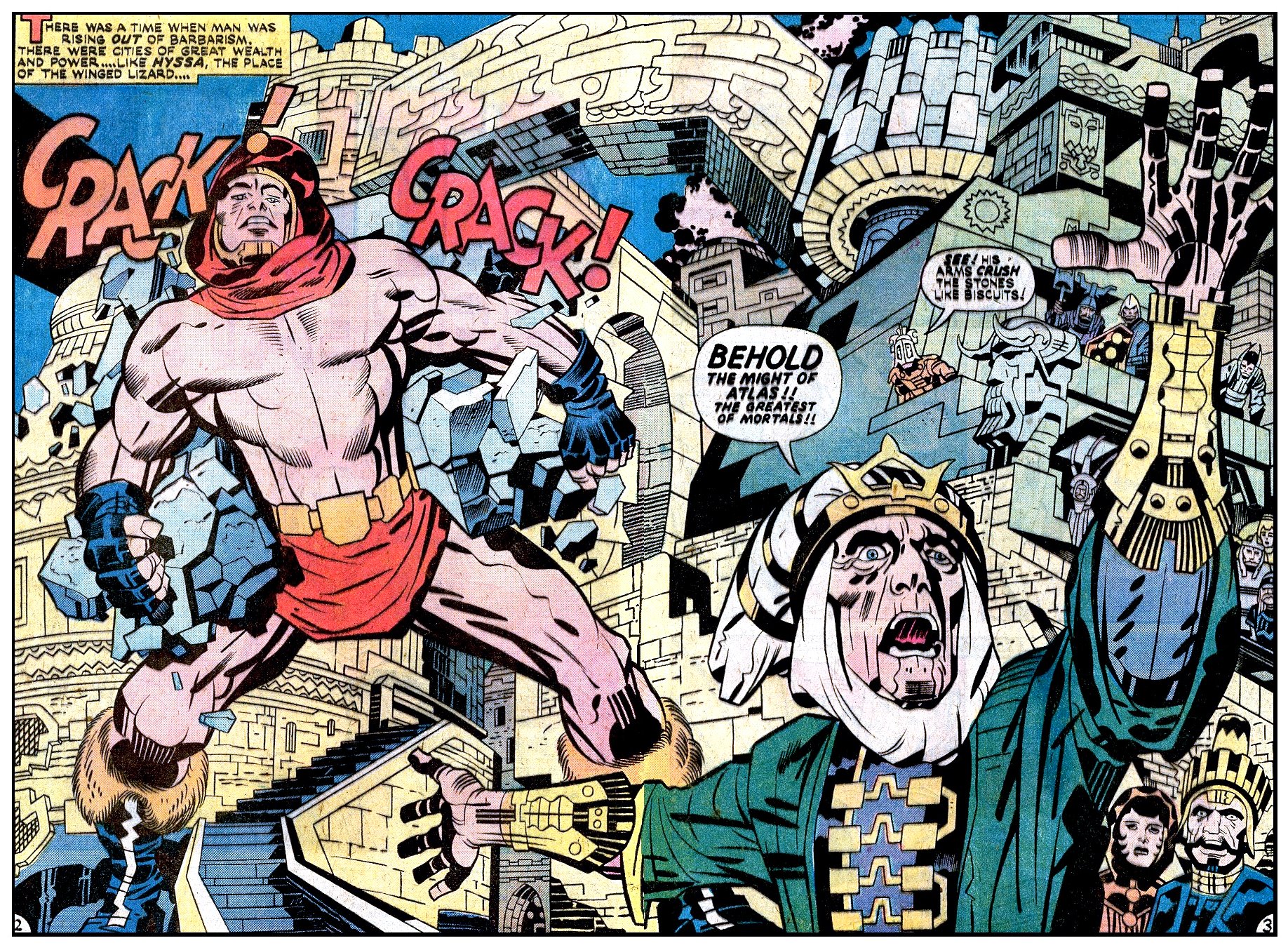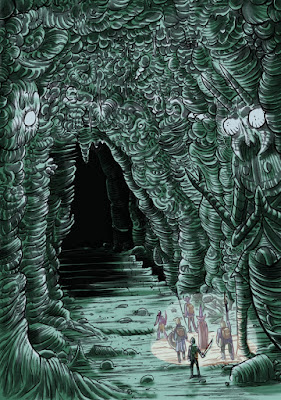Reading Kevin Crawford's Godbound (which is pretty cool!), I've been thinking about how I might use it, if I ever got around to it. I have two ways I might use it, actually, but here's one of them.
The first borrows some from my old Gods, Demi-gods and Strangeness idea, except it would shift to being more about Kirby-esque super-gods heroics like The Eternals or The New Gods rather than mortal plagued by science fictional gods.
The background: For reasons not fully known to anyone but himself, the titan Kronos sought to create a more permanent world of matter and time, something less mutable than the idea-space of chaos where the titans existed. Eleven of his peers were either dupes or co-conspirators in the creation.
The Titans were lessened by their participation in the Cosmos project. They were forced to embody and support fixed aspects of the architecture of Kronos's world: They entered as creators but became as much prisoners as those that came after them. Like in Greek Myth (and Exalted's Creation), the Earth is flat:
(The world probably resembles the world known to the Ancient Greeks, but maybe "blown up" slightly.)
Kronos's rule was in many ways a Golden Age, with human's living in protected gardens, yet at the caprice of Kronos and his allies. The Olympians also resented his command, and they led a usurpation, that toppled the Titans and imprisoned them away. Humans were freer, but also suffered from disease and hunger and lived shorter lives. The Olympians restricted human technology, fearful initially of another revolt.
In the current age, the Olympians are decadent and distracted. Mighty heroes and demi-gods have appeared among human, ready to rediscover the technology of the Titans and challenge the gods themselves with their deeds.
The Feel: Mythic Greece as a science fantasy, superhero epic. This is a "ahistorical," mythical ancient Greece. I mean, more ahistorical than usual. It might be a distant past like the Camelot of 8000 BC in DC Comics' Seven Soldiers: Shining Knight. It has a bit of Kirby, a bit of Starlin, maybe a bit of Peter Chung's Reign: The Conqueror.
2 hours ago







.jpg)














